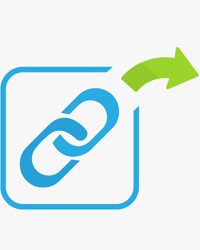Everyone has clicked and used links online, but there’s more to links than it meets the eye. If you own a company or website, you should know that building proper links can make all the difference in how your site functions and how much traffic you receive. Read on to learn everything you need to know about building links, from how to structure the HTML of a link to how to obtain valuable backlinks for your business.
Building Properly Structured Links
A link is simply an actionable line of text or image that can direct users to a specific website or element on a page. Internal links point to locations within the same domain name on which they are posted.
You can direct internal links to another page on your website, a form for visitors to fill out, or even a specific area on the same page containing the link. To build proper links on your site, you will need to know a few basic HTML tags and attributions.
Don’t fret if you don’t know any HTML, it takes less than a couple of minutes to learn the HTML for links, and there are other solutions for building links if you’re not into coding or writing web scripts.
There are HTML generators online if you get stuck or would rather have your links automatically generated. You can also use the TITLE HTML attribute to define what your link should say when users hover over it with a mouse.
Building External Links
Building external links for your website works the same way, except the URL you use for external links belongs to a separate domain name.

It’s a good practice to link to external sites within your page’s text content, to help search engines connect your site and content to other similar sites. This can be especially helpful if your business or website is new and you’re linking to authoritative, informative websites.
Getting Backlinks for Your Website
Aside from knowing how to properly structure links pointing to and from your website, it’s a good idea to get an understanding of what backlinks are, and how they can help you. A backlink is a link that exists on another website that points to your website.
Search engines count and track how many backlinks are pointing to your content at any given time, to help determine the usefulness your content. The practice of obtaining backlinks is often called link building.
There are several ways to earn backlinks across the web, and the more high-quality backlinks you have, the more of a boost to your site’s traffic you should see. The best way to get started building backlinks is to find relevant sites, forums, and discussion boards that will allow you to post your link to them.
It’s important that you post your backlinks in a professional manner; if people or search indexing software detects that your links are associated with spam or irrelevant content, your own links could work against you. To ensure you’re only posting backlinks to your site where they’re useful, add a helpful comment or information about your products and services whenever posting your backlink.
Building backlinks is an important part of your overall Search Engine Optimization or SEO strategy. If you don’t want to locate and engage with online communities and websites where you can potentially post backlinks, you should consider using a third-party backlink service. Such businesses provide backlinks to your site across a variety of unique domain names and can give you a quick-and-easy boost in web traffic and search engine rankings.
Checking Your Backlinks
Once you’ve got some backlinks on the web that point users to your site, you should periodically review how well they are working for you. There are several methods of checking your backlinks, with the two most common being manually checking links, and checking them through a backlink-inspection service.
You can check for backlinks manually by typing the URL of your website into a search engine in parenthesis. The parenthetical search operator limits your results to sites containing the exact phrase or domain you’re searching. Count the results of your search, paying attention to the number of unique domains containing links to your website. You may want to try variations of your primary domain, and repeat the process on multiple search engines if doing these checks on your own, for more accurate results.
Google uses a system called PageRank that measures the quality and number of your backlinks, and the information they collect goes into the algorithmic decision of how your site will rank in their search results.
There are several companies that provide PageRank analysis tools that can inspect your website and crawl the web to measure the quality of your internal links, external links, and backlinks. One among them is SEMrush, it provides competitive research for the best keywords and online marketing ideas.
These services use custom-made scripts to search the web for links to your content, which is more accurate and effective than the aforementioned manual method of checking backlinks.
Knowing how to properly structure your links in HTML will help search engines know that your site and content is coded correctly, and will help with your site’s SEO. Building plenty of internal links on your website also helps search engine crawlers and users navigate your content without confusion. Placing External links on your website can help show search engines that your content is associated with established, authoritative sites. Backlinks are perhaps the most helpful links for website owners, as they can drive traffic directly to your website, and indirectly through helping you achieve a higher page ranking.